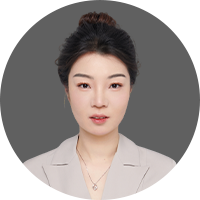Yong Zi Tan’s research focuse is on using cryogenic electron microscopy (cryo-EM) to elucidate the high-resolution protein structures involved in human diseases, including tuberculosis, malaria, and cancer. The atomic models he elucidated are crucial for understanding how biological processes function, how diseases progress, and how to design drugs targeting these proteins. Core to his research is how he develops methods in cryo-EM to enable these amazing structures to be solved.
He pioneered a strategy – the tilted data collection – to attempt to recover more views of the protein suffering from a common problem called preferred orientation. This strategy enabled him and his colleagues to solve 14 different ribosomal assembly intermediates, providing crucial knowledge for designing potential antibiotics against this pathway.
Additionally, he and his colleagues developed a software called 3DFSC to ascertain the degree of preferred orientation artefacts in any 3D reconstruction, and maintain it as a web server for the benefit of structural biologists all around the world. The tilted data collection strategy and 3DFSC is now regularly used by cryo-EM scientists in the world to understand and solve the issue of preferred orientation.
By using a series of computational corrections, he and his colleagues showed it is possible to obtain a resolution of 1.87 Å for a virus capsid called AAV2, seeing water molecules and hints of hydrogen density. More importantly, by being the first few to show that a mathematical correction called Ewald sphere curvature correction was crucial to achieve this high resolution, it made the use of this technique more widespread in the field.
By working with the engineering team of Spotiton robot, he was able to use about a thousand-fold less protein sample than conventional freezing strategies, due to their innovative inkjet dispensing technology and self-wicking grids. This allowed him and his colleagues to solve multiple structures of membrane proteins important for understanding and treatment of tuberculosis.
Through collaboration with the cryoSPARC software gurus, Yong Zi and his colleagues beta-tested a new non-uniform refinement strategy, which allowed them to solve the atomic resolution structure of malarial protein PfCRT and understand how its mutations lead to drug resistance.
Cryo-EM freezing devices in general cost USD$100,000 and more. Yong Zi and his colleagues showed it is possible to build a homemade device (called Back-it-up) that is just USD$1000, one hundred times cheaper than commercial devices. The blueprints for this device have been made publicly available, for the benefit of other scientists.




